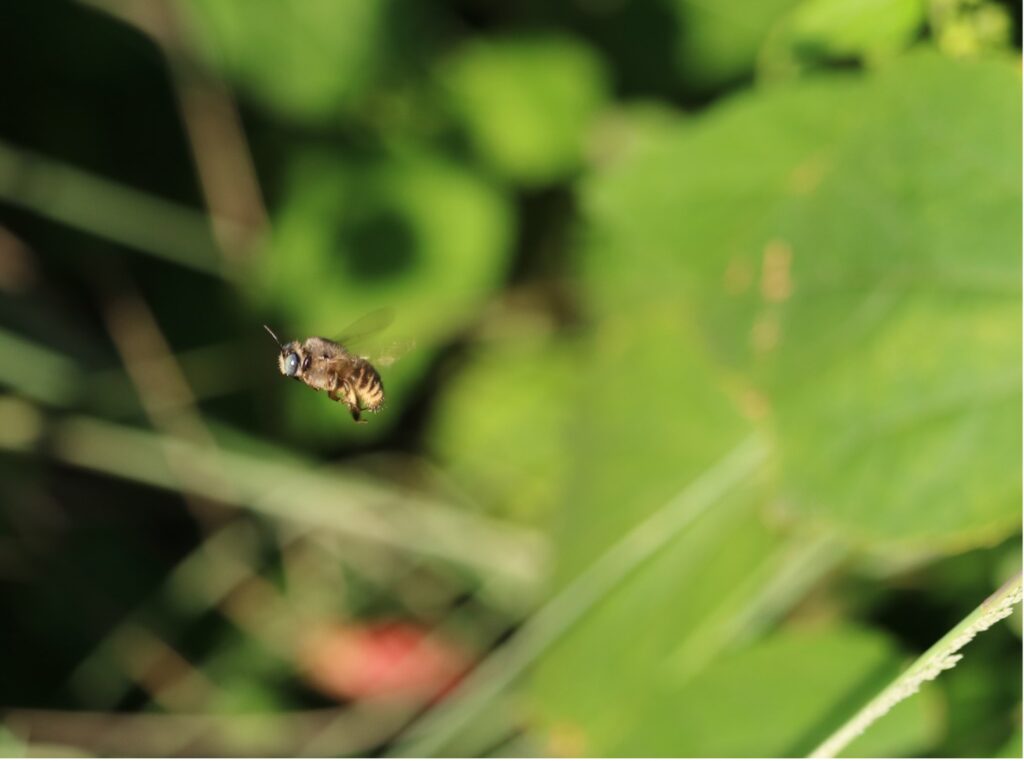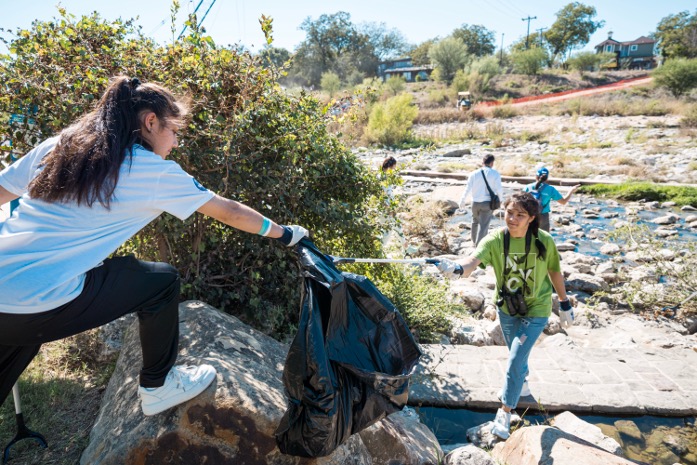Last Updated on January 30, 2024
A Parkinson’s carpenter bee (Xylocopa tabaniformis ssp. Parkinsoniae) in mid-flight. Photo Credit: Lee Marlowe
In our quarterly RIVER CAMP! Series, we invite younger supporters of the San Antonio River (and those young at heart) to learn more about this precious freshwater resource. Tune in for educational information, river-centric activities, great videos, and even ways families can take personal actions for a sustainable river!
Do all Bees Make honey?
When you hear the word “bee,” what do you see in your mind’s eye? Maybe you picture a giant hive with honey inside? Or do you imagine a single bee living alone in its own tiny home?
Though it may surprise you, the latter is much closer to the truth – Texas is home to several hundred bee species, most of which are solitary bees. Unlike the honey bee, solitary bees don’t collect nectar to produce honey. However, as all bees do, they provide the essential ecosystem service of pollination. Did you know that one out of every three bites of food you take is provided by a pollinator? The next time you sit down for a meal, thank a bee for the food on your plate!
Some types of solitary bees, such as leaf-cutter bees (Genus Megachile) and carpenter bees (Genus Xylocopa), are native to Texas. They can be found sheltering in their home alone or flying from flower to flower- you guessed it- pollinating!
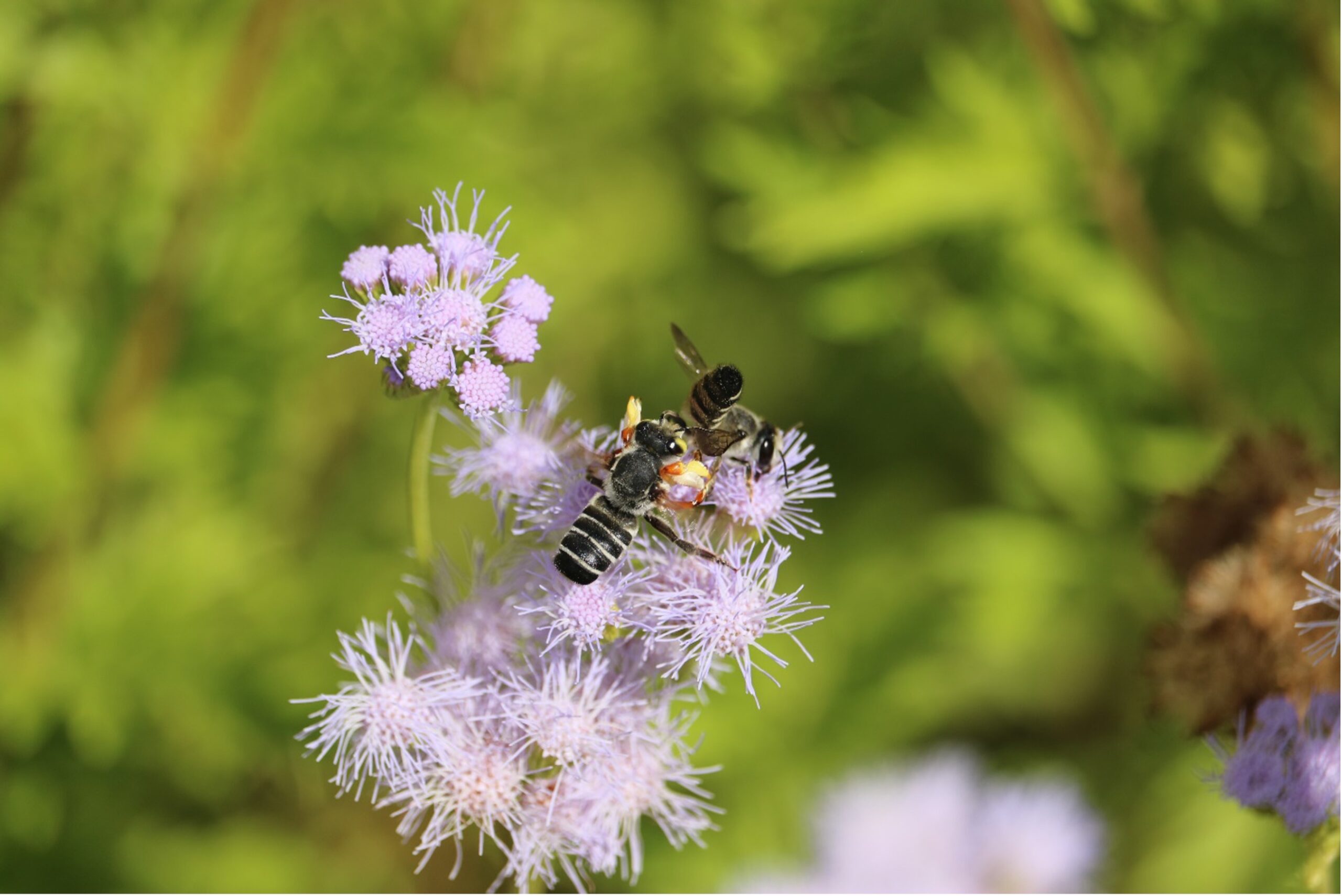
A pair of Megachile policaris, a species of leaf-cutter bee, feeds on Gregg’s mistflower. Photo Credit: Lee Marlowe
Unfortunately, our native bees are in trouble. Human activities like building housing developments and traditional lawns are destroying habitats and reducing the space for bees to find shelter. The use of pesticides can also be harmful to bees. Pesticides are chemicals designed to repel harmful bugs that eat our plants. Sadly, they can also kill beneficial ones like bees.
How You Can Help the Bees!
- Plant native vegetation that will provide food for bees as they pollinate. Check out this guide to the best plants for pollinators in your area.
- Reduce pesticides in your garden or look for safer alternatives.
- Use the Seek by iNaturalist app to identify the species of bees that live near you! Fun Fact: A River Authority staff member identified over 13 species of bees pollinating the native vegetation at one of our buildings!
- Build an insect hotel!
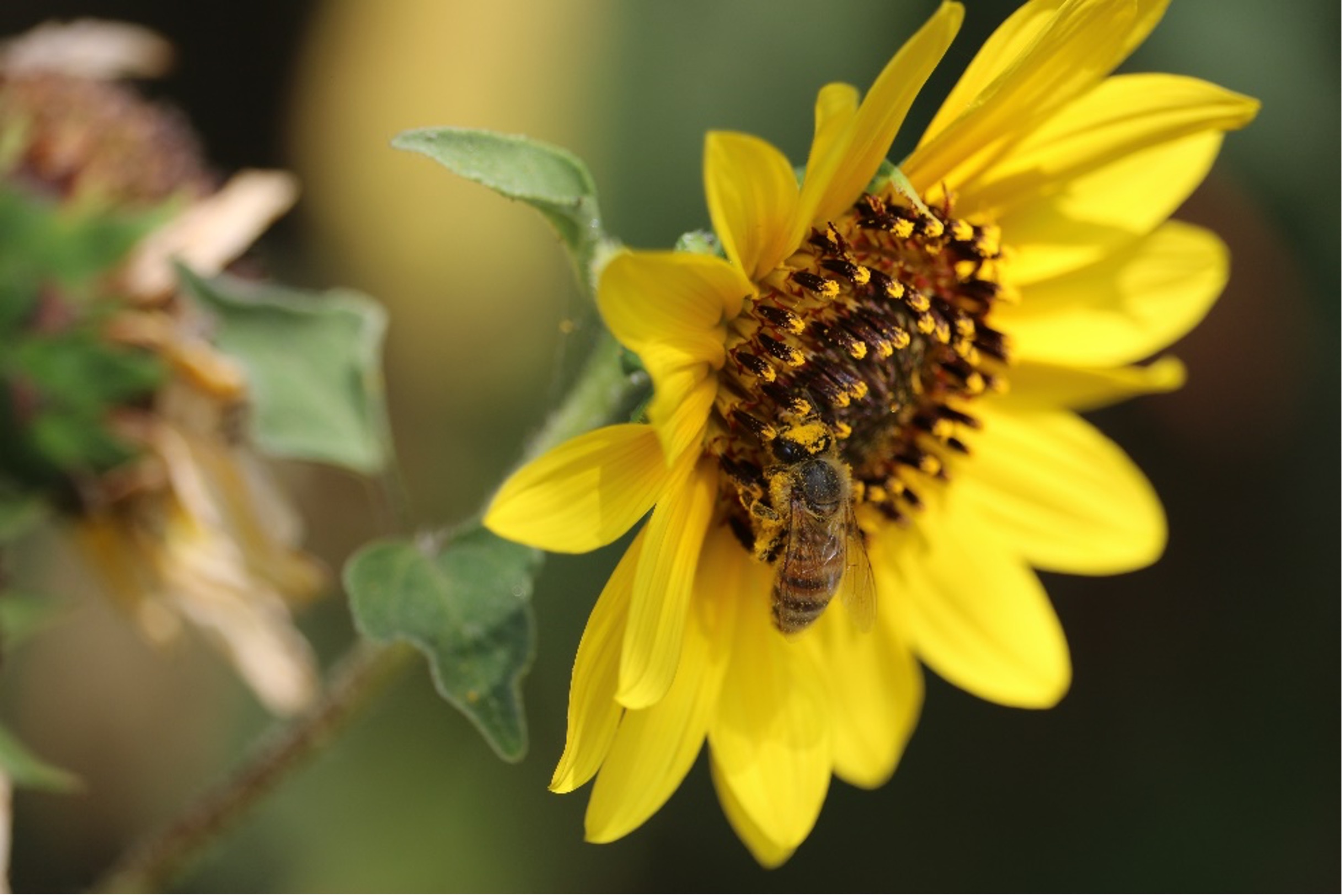
A Western honey bee (Apis mellifera) feeds on a Common sunflower. Photo Credit: Lee Marlowe
What is an insect hotel?
If you have visited Confluence Park, you may have seen an interesting looking sculpture that looks like this:
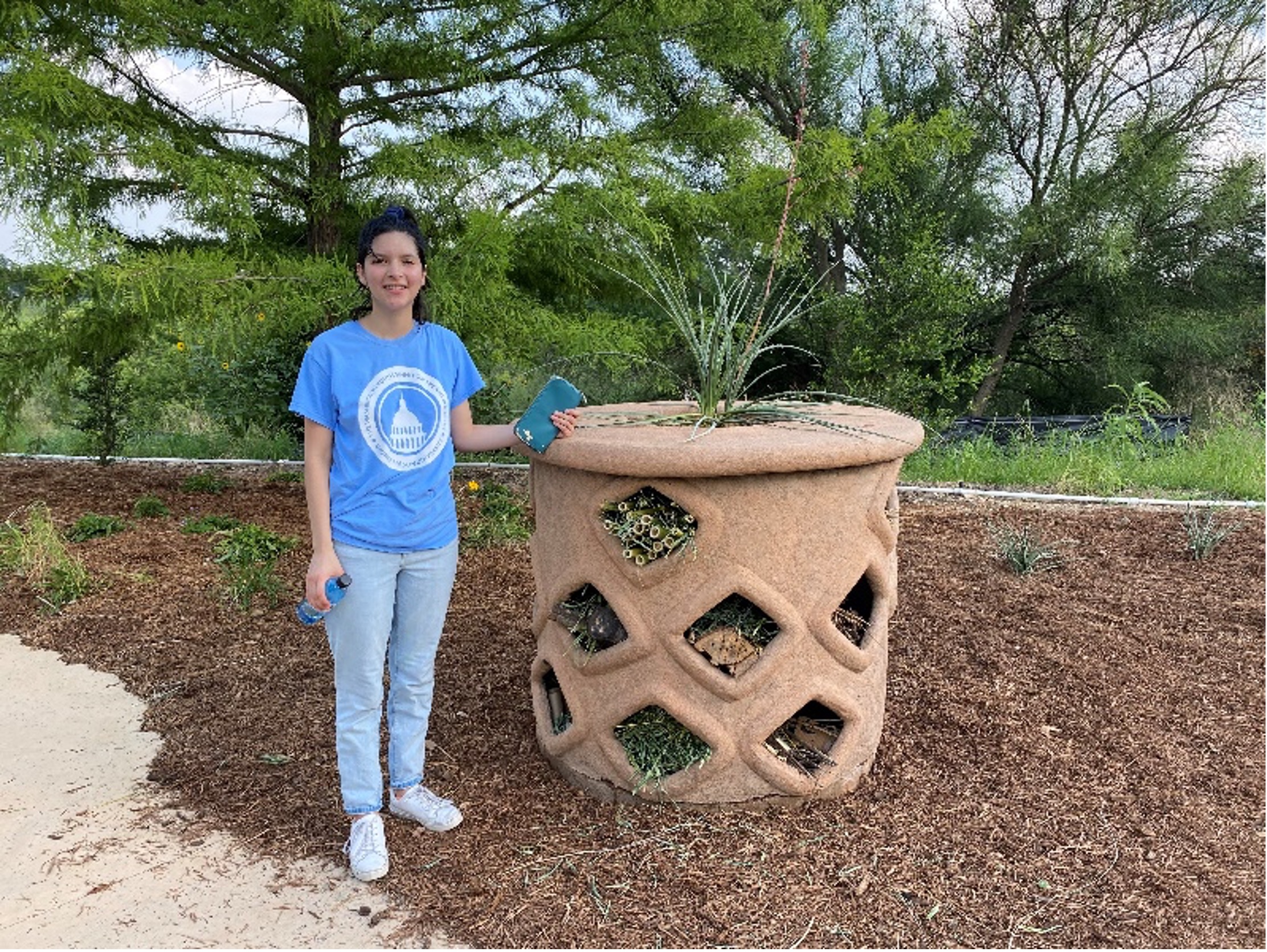
Student intern Paloma Jimenez with the insect hotel. Photo Credit: San Antonio River Foundation
However, it is not a giant sculpture; it is a giant insect hotel! This hotel is one of a kind and was designed by local artist Tobin Simpson Hays. Located next to the North American Friendship Garden, this unique hotel provides shelter to insects as they conduct the very important ecosystem service of pollination. Feeling inspired? Check out this bee hotel tutorial to get started
Want to know More about Bees?
Check out this buzz-worthy video below to watch some bees in action along the San Antonio River while learning more important facts!
The River Reach is back!
River Reach is a quarterly, 12-page newsletter that is designed to inform the San Antonio River Authority’s constituents about the agency’s many projects, serve as a communication vehicle for the board of directors and foster a sense of unity and identity among the residents of Bexar, Wilson, Karnes, and Goliad counties.
If you wish to be placed on the mailing list for River Reach, please contact us or complete the form here.

